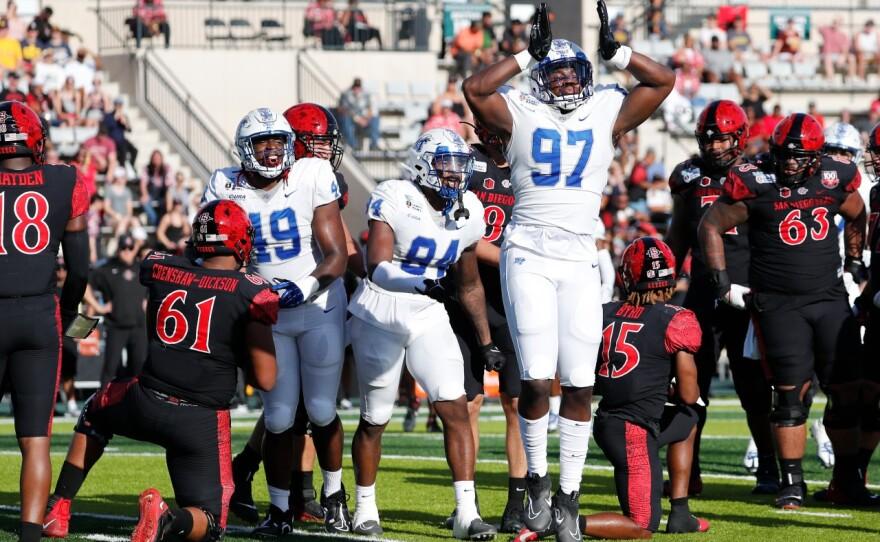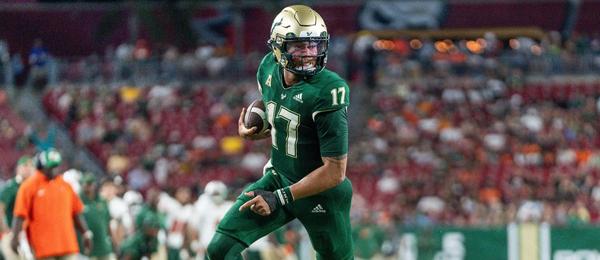•
Written By
Written By
•
•
•
Loading article...
Written By
Written By
The AAC just vacated its spot in the Hawaii Bowl. Is this a sign of decline for the Hawaii Bowl?
Written By
Omar-Rashon Borja
Senior Writer, Editor, Historian
Written By
Omar-Rashon Borja
Senior Writer, Editor, Historian

The most wonderful time of the year is here. The Hawaii Bowl’s announcement of a Coastal Carolina-San Jose State matchup was the first of this bowl season. Coastal Carolina becomes the first Sun Belt team to ever appear in the Hawaii Bowl while San Jose State also makes its first appearance in the island bowl.
Coastal Carolina claiming new bowl soil for the Sun Belt is an easy headline for college football fans to notice. The Chanticleers' island getaway is a testament to the depth and parity of the conference. 12 out of 14 Sun Belt schools will bowl this year.
However, one can easily overlook how Coastal Carolina got the Hawaii Bowl spot. The Hawaii Bowl was supposed to feature an AAC team opposite a Mountain West team. In previous years, neither the Mountain West nor the American Athletic Conference gave up on an opportunity to reward one of its teams with a trip to paradise.
2023 is a different story. The American will place only six of its 14 teams in bowls this year. If Tulane heads to the New Year's Six after winning the AAC, only five non-New Year's Six bowls will have AAC representation.
This begs the titular question. Is the Hawaii Bowl losing its luster?
The state of Hawaii has a rich bowl history. The Aloha and Oahu Bowls were Christmas Day staples for nearly two decades. After a brief period of uncertainty, the Hawaii Bowl took its place and thrived on Christmas Eve.
In the past, the Hawaii Bowl has featured must-see matchups in the Group of Five. In 2015, the Mountain West sent its champion, 10-3 San Diego State, to face former two-time Big East champion Cincinnati. In 2017 and 2019, the Hawaii Bowl saw the Mountain West championship game loser participate.
A conference passing on an appearance in the Hawaii Bowl is unprecedented. Yet, it is easy to understand the AAC's decision when one looks at the benefits and drawbacks of the Hawaii Bowl. Travel is the most obvious obstacle. A trip from the mainland to Hawaii on three weeks' notice is a tough sell for any fanbase.
Hawaii's stadium crisis may also factor in the Hawaii Bowl's declining allure. Clarence T.C. Ching Athletics Complex is tiny compared to its predecessor, Aloha Stadium. The Ching Athletics Complex seats around 15,000 fans, while Aloha Stadium held a capacity of 50,000. Other bowls owned by ESPN see more attendance with a half-empty stadium than a sold-out Ching Athletics Stadium.
Additionally, despite all its flaws, Aloha Stadium had some recruiting value. The opportunity to play a game in the stadium that hosted the Pro Bowl for over three decades was a draw for AAC schools. Now, that appeal is gone. The Ching Athletics Complex is a bridge between stadiums for the Hawaii football program and has hardly any football pedigree.
Coastal Carolina-San Jose State is a rare intersectional matchup that displays the thrill of Bowl Season. Still, the American's choice to vacate the bowl puts the Hawaii Bowl's standing amongst its peers in question.

